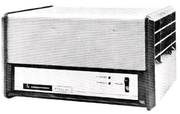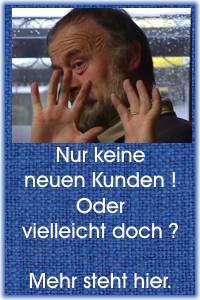EQUIPMENT TEST REPORTS - By Hirsch-Houek Laboratories
C/M LABORATORIES MODEL 911 STEREO POWER AMPLIFIER
Although there are a number of amplifiers capable of delivering 50 or 60 watts per channel with low distortion, one has few choices in the region of 100 watts. A recent arrival in the "super-power" category is the C/M Laboratories Model 911 basic power amplifier. We saw and heard it in action at last fall's New York High Fidelity Show, and recently were able to test a production unit.
(in Verbindung mit den Bozak Lautsprechern)
As one might expect of an amplifier that can deliver over 100 watts per channel with negligible distortion, the C/M Model 911 is large and heavy. It measures 14" wide, 8" high and 11" deep, and weighs about 40 pounds. It has twenty-three silicon transistors and seven silicon diodes, including rectifiers.
C/M rates amplifiers as we do, with both channels driven simultaneously, and specifies an output of 100 watts into 8 ohms, 90 watts into 4 ohms, and 60 watts into 16 ohms. An unusual (and unverifiable) specification is the total available peak power output of 1.1 kilowatts into very low impedance loads.
In any case, our measurements convinced us that under real operating conditions the C/M Model 911 can deliver well in excess of 500 watts peak power into 8-ohm loads, which should be sufficient for anyone.
The C/M Model 911 cannot be damaged by transient overloads, and it is protected from continuous overload or short circuits in the speaker output lines by a relay that reduces the supply voltage to the output transistors.
A red standby light on the amplifier indicates an overload condition. Removing the short or overload restores operation. The Model 911 required a 0.5-volt input signal to drive it to 10 watts output, or about 1.5 volts input for full power output, which is never likely to be used in the home.
Specs :
Input impedance is about 50,000 ohms, which most preamplifiers can handle without difficulty. Hum and noise measured 74db below 10 watts, an inaudible level. The rated frequency response of ±0.5db from 20 to 20,000 Hz was confirmed by our measurements, although this is close to the accuracy specification of our instruments.
We were most impressed by C/M's conservative power and distortion specification of less than 0.5 per cent IM distortion at any power from 1 to 100 watts into 8-ohm loads. The IM proved to be about 0.08 per cent (about the residual level of our instruments) from 0.1 watt to about 30 watts, reaching a still very low 0.23 per cent at 100 watts. The 1,000 Hz harmonic distortion was 0.15 per cent at 100 watts and less than 0.08 per cent below 75 watts. Measuring the power output at the point of visible waveform clipping, we found it to be 131 watts into 4 ohms, 95 watts into 8 ohms, and 75 watts into 16 ohms.
In the power-bandwidth measurements, the C/M Model 911 delivered 100 watts from 50 to 18,000 Hz at less than 1 per cent distortion (actually about 0.7 per cent over most of the frequency range).
The apparent discrepancy between these figures and the ones previously mentioned results from the fact that the power-bandwidth measurements were made with the amplifier fully heated from prolonged operation at high power, while the others were made with the amplifier relatively cool.
At 50 watts, distortion was under 0.2 per cent from 20 to 20,000 Hz. At 10 watts, it was less than 0.1 per cent up to nearly 10,000 Hz, rising to 0.21 per cent at 20,000 Hz.
The C/M Model 911 is completely stable under capacitive loads or into open circuits. Delivering full power for prolonged periods without distress (or distortion) and withstanding repeated short circuits of its output terminals, it had no weaknesses that we could discover.
As with any fine amplifier, this one has absolutely no special sound quality or coloration of its own. It is unstrained and effortless at any level from a whisper to the loudest signal we dared apply to our speakers. The 911's construction and performance suggest that it can be installed and then forgotten, and it obviously can drive even the least efficient speaker to the limits of endurance without any risk of damage to, or even any distortion from, the amplifier.
The very low distortion at low power levels also makes this amplifier especially suitable for homes where listening is sometimes done at a moderate or very low level, as well as at full orchestral volume. Not everyone will have the need or the desire for a super-power amplifier, but for those who do, we can't suggest a better one than the C/M Model 911. It sells for $477.
Both IM and 1,000-Hz harmonic distortion are below the lowest chart value over most of the power range. Similarly, low-power output distortion (below) remains below the 0.1 per cert level.



